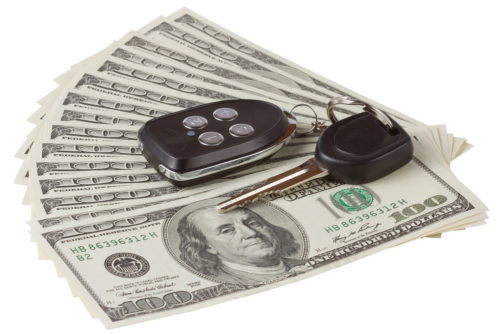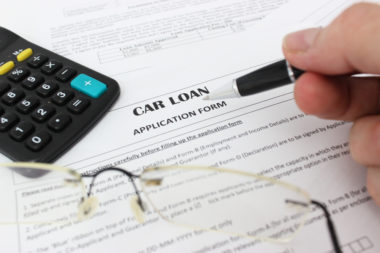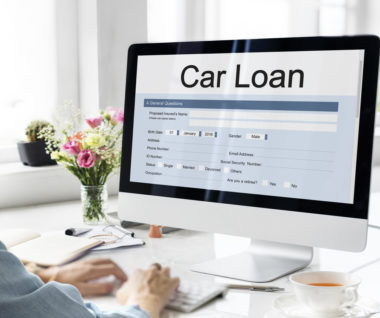Buying a new car is one of the biggest investments you can make, with the average cost being $37,285 in June 2019. Besides the total cash price, there are several other factors that contribute to the overall cost of a car including fees and taxes, financing costs, insurance, maintenance, fuel, and depreciation.
In most cases, you’ll need to be able to put 11.7% down on a new vehicle initially and be able to pay the $9,576 a year it takes on average to own and operate it. Here we’ll explain how to break these contributing costs down so they’re more manageable and offer tips on how to save up for a car.
Table of Contents
Set a Budget Based on What You Need in a Car
Everyone’s needs are different. So the first step is to determine which specific characteristics and features you’re looking for in your future car. You’ll want to break these down into three main categories.
First, there are aspects that are absolutely necessary. For instance, you may need a car that was built after a certain year and that has an automatic transmission as opposed to a manual one. Second, there are very preferable (but not mandatory) aspects like built-in GPS and a reverse sensing system. Third, there are pleasant additions such as remote keyless entry and built-in seat warmers.
Begin your search by looking for the cheapest cars that meet your minimum requirements. If you find there are a lot of cars that meet those requirements at an acceptable cost, you can expand your research and look for cars with preferable features. If again you find a sizable selection at a reasonable price, keep going and look for vehicles that have pleasant additions. After doing comprehensive research, figure out which vehicles you can realistically afford.
Calculate Your Down Payment
Besides knowing what you can regularly budget for, you must also be sure that you can make a down payment. As we mentioned earlier, you can expect to pay around 11% upfront, and the cost is usually fixed beforehand. There are two main approaches to down payments. One is to pay as much as possible, while the other is to make the smallest payment possible.
The benefits of paying as much as possible are that you’ll usually have a lower interest rate, lower monthly payments, and you can offset depreciation. The main drawback is that it’s going to eat into your savings, potentially creating financial hardships in other areas — and for some people who are already struggling with their existing bills, this simply isn’t an option.
The advantage of paying as little as possible is that it won’t deplete your savings, making it more financially feasible initially. In turn, you’ll have more money to spread around and spend on other things like a mortgage. The downsides are that you’ll likely a higher interest rate, bigger monthly payments, and it will take longer to pay off your vehicle. So keep these pros and cons in mind when saving up for a car, and try to find the sweet spot with your down payment.
Budget for Monthly Payments
Assuming you make the average down payment of 11%, it will certainly take a chunk out of the overall cost of your car. However, you’ll still have to pay the remaining 89% with ongoing monthly payments. Therefore, it’s vital that you’re not only able to make regular payments, but able to make them for a long time to come.
On average, new car owners paid $531 per month as of August 2018 and had a loan lasting 72 months. By these numbers, the average person would need to be able to pay over $500 per month for six years. Besides paying for the car itself, you also need to factor in other expenses involved in car ownership like maintenance, fuel, etc.
Use These Money-Saving Strategies
Knowing what your savings goal is gets you part of the way; now you need to start saving. Here are some tips to help you find a good deal and pay your car off more quickly.
Shop Around for Auto Loans
You shouldn’t assume that the best deal for an auto loan is at a dealership. Instead, you should shop around and look online as well as with local banks and credit unions in your area. Based on the list price, look at the down payment, length of the loan, and interest rate when making comparisons. Keep in mind that your interest rate will be affected by the loan amount and loan term as well as your credit score, personal income, and debt. Then make a list of each auto loan and see which one is the best offer. The Auto Loans Calculator & Comparison Tool from Allstate can help you with this.
Negotiate on Price and Terms
Often, a lender’s auto loan rate won’t be set in stone, so don’t be afraid to haggle because this can save you a considerable amount of money in the long run. If you’ve got a good credit score in the high 700s or higher, this will give you leverage. Even if your credit score is less than ideal, it doesn’t hurt to negotiate because you can potentially find some great deals. Also note that if you’re going through a dealer, they sometimes offer low-interest financing as part of promotions, which is something else to look into.
Set Up a Savings Account (and Automate Your Contributions)
Staying disciplined with your car payments is essential. One way to make it easier is to create a savings account that’s specifically designated for your car, and to automate your contributions. This way a certain percentage of your paycheck will be automatically deposited into your savings account at a specified frequency. Doing so should help with both saving for a car as well as ensuring you can make your monthly payments.
Trade-In or Sell Your Old Car
Another good strategy for saving money for a new car is to either trade-in your old car at the dealership or sell it. A trade-in is simple where the value of your old car is deducted from the new car price, which can lower your costs significantly. Or, if you choose to sell it, be sure to take the proceeds and put them toward your new car.
Reduce Spending, and Increase Earnings
Finally, you can improve your financial situation and save up for a car by adjusting your lifestyle and taking steps to boost your income. This often starts with frugal living, some examples being eating meals at home rather than dining out, or buying clothes and household items second-hand instead of new. Side-hustles, like selling items on Facebook Marketplace and Craigslist and becoming a part-time Uber or Lyft driver, can help you generate more income as well. Also, general budgeting and being more aware of where your money is going can help you correct issues and reduce your spending. This article from Forbes offers info on the best budgeting apps of 2019.
Image Source: https://depositphotos.com/





